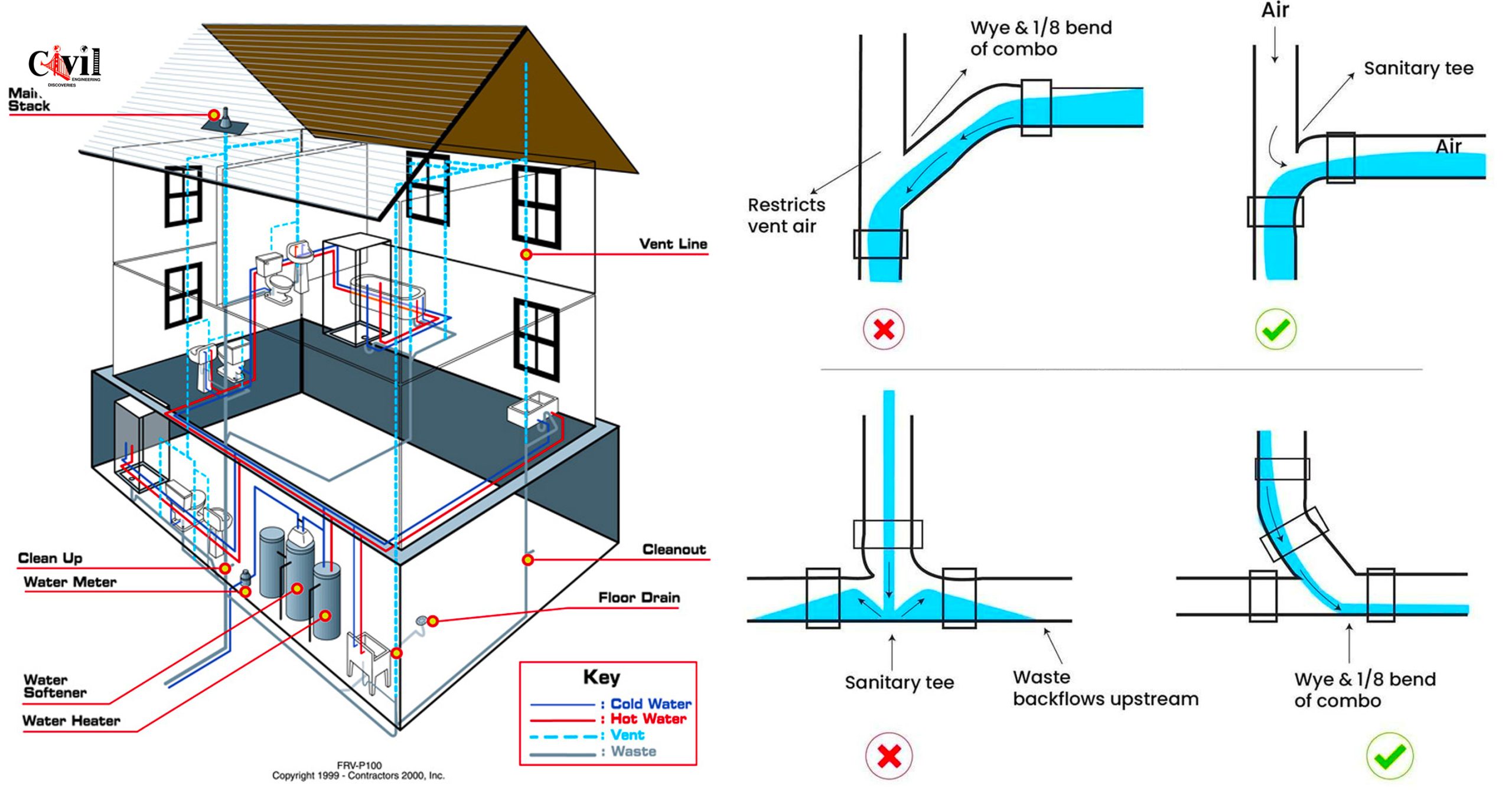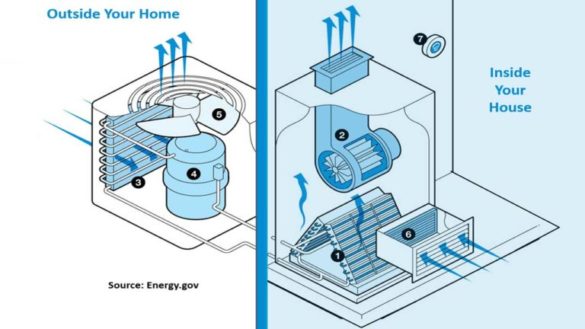The article in the next paragraphs about Plumbing Installation 101: All You Need to Know is without a doubt insightful. Give it a go and make your own personal final thoughts.

Recognizing exactly how your home's pipes system works is vital for every single property owner. From delivering tidy water for alcohol consumption, cooking, and showering to securely removing wastewater, a well-kept pipes system is essential for your family members's wellness and convenience. In this extensive overview, we'll discover the intricate network that comprises your home's pipes and deal ideas on upkeep, upgrades, and taking care of typical concerns.
Intro
Your home's pipes system is greater than just a network of pipes; it's a complex system that ensures you have accessibility to clean water and efficient wastewater removal. Knowing its elements and exactly how they collaborate can assist you stop expensive repair services and make sure whatever runs efficiently.
Fundamental Elements of a Pipes System
Pipelines and Tubes
At the heart of your pipes system are the pipelines and tubing that lug water throughout your home. These can be constructed from numerous products such as copper, PVC, or PEX, each with its benefits in terms of sturdiness and cost-effectiveness.
Fixtures: Sinks, Toilets, Showers, etc.
Fixtures like sinks, commodes, showers, and bath tubs are where water is made use of in your house. Recognizing just how these components link to the plumbing system helps in identifying problems and planning upgrades.
Shutoffs and Shut-off Factors
Valves control the flow of water in your pipes system. Shut-off shutoffs are important during emergency situations or when you require to make repairs, permitting you to separate parts of the system without interrupting water flow to the whole home.
Water System
Main Water Line
The main water line attaches your home to the local supply of water or a private well. It's where water enters your home and is dispersed to different fixtures.
Water Meter and Stress Regulator
The water meter measures your water use, while a pressure regulatory authority makes sure that water moves at a risk-free pressure throughout your home's plumbing system, preventing damages to pipes and components.
Cold Water vs. Warm water Lines
Understanding the difference between cold water lines, which provide water straight from the main, and warm water lines, which carry warmed water from the water heater, aids in fixing and planning for upgrades.
Drain System
Drain Pipes Pipeline and Traps
Drain pipelines bring wastewater far from sinks, showers, and bathrooms to the sewer or sewage-disposal tank. Traps stop sewer gases from entering your home and additionally trap particles that can cause obstructions.
Ventilation Pipes
Air flow pipes permit air into the drain system, preventing suction that might slow down drainage and trigger catches to empty. Correct ventilation is necessary for keeping the integrity of your pipes system.
Relevance of Appropriate Drainage
Making certain correct drainage protects against backups and water damage. Consistently cleaning up drains pipes and preserving catches can avoid costly repair services and expand the life of your plumbing system.
Water Heater
Sorts Of Water Heaters
Water heaters can be tankless or conventional tank-style. Tankless heating systems heat water on demand, while storage tanks save heated water for immediate use.
Updating Your Pipes System
Factors for Upgrading
Upgrading to water-efficient components or changing old pipes can boost water quality, decrease water expenses, and raise the value of your home.
Modern Plumbing Technologies and Their Benefits
Discover modern technologies like clever leak detectors, water-saving toilets, and energy-efficient water heaters that can conserve cash and reduce environmental impact.
Expense Factors To Consider and ROI
Calculate the in advance prices versus lasting financial savings when taking into consideration pipes upgrades. Several upgrades pay for themselves through decreased utility expenses and fewer fixings.
Just How Water Heaters Connect to the Plumbing System
Comprehending just how hot water heater attach to both the cold water supply and warm water circulation lines helps in diagnosing issues like not enough warm water or leakages.
Upkeep Tips for Water Heaters
Regularly flushing your hot water heater to get rid of sediment, examining the temperature level settings, and evaluating for leakages can prolong its lifespan and improve power effectiveness.
Common Pipes Concerns
Leaks and Their Causes
Leakages can take place because of aging pipelines, loose installations, or high water stress. Dealing with leakages quickly prevents water damages and mold and mildew development.
Blockages and Obstructions
Obstructions in drains pipes and commodes are commonly triggered by flushing non-flushable items or a build-up of oil and hair. Utilizing drainpipe screens and being mindful of what goes down your drains pipes can stop obstructions.
Indications of Plumbing Troubles to Look For
Low water stress, slow drains pipes, foul odors, or uncommonly high water bills are indicators of potential pipes troubles that ought to be addressed quickly.
Pipes Maintenance Tips
Routine Inspections and Checks
Arrange yearly plumbing inspections to catch concerns early. Search for indicators of leaks, rust, or mineral accumulation in faucets and showerheads.
Do It Yourself Maintenance Tasks
Basic jobs like cleaning faucet aerators, looking for toilet leakages using color tablet computers, or protecting subjected pipelines in chilly environments can avoid major plumbing concerns.
When to Call a Specialist Plumbing
Know when a pipes problem calls for expert know-how. Attempting intricate repair services without proper expertise can result in even more damage and greater repair work prices.
Tips for Decreasing Water Use
Straightforward practices like dealing with leaks promptly, taking much shorter showers, and running full tons of washing and meals can preserve water and lower your energy bills.
Eco-Friendly Pipes Options
Consider lasting pipes materials like bamboo for floor covering, which is durable and eco-friendly, or recycled glass for countertops.
Emergency Readiness
Actions to Take Throughout a Plumbing Emergency situation
Know where your shut-off shutoffs are located and just how to turn off the water system in case of a burst pipe or significant leak.
Significance of Having Emergency Situation Contacts Useful
Keep contact info for neighborhood plumbings or emergency services easily offered for quick reaction throughout a pipes situation.
Environmental Impact and Conservation
Water-Saving Fixtures and Appliances
Installing low-flow faucets, showerheads, and toilets can considerably lower water use without sacrificing efficiency.
DIY Emergency Fixes (When Appropriate).
Short-term fixes like using duct tape to spot a dripping pipeline or positioning a pail under a trickling tap can decrease damages till an expert plumber arrives.
Conclusion.
Comprehending the anatomy of your home's plumbing system empowers you to preserve it successfully, saving time and money on repair services. By adhering to routine upkeep regimens and remaining notified concerning modern-day pipes technologies, you can ensure your plumbing system operates successfully for several years to come.
HOW YOUR PLUMBING SYSTEM WORKS
Which Pipes Do What?
Blue lines = fresh water supply entering the building Red lines = hot water supply entering the building Grey lines = pipes carrying waste away from the building and venting pipes carrying gases away from the building (through the roof) YOUR MAIN PLUMBING SYSTEMS
There are two main plumbing systems that support your home s basic plumbing needs one that brings clean water into your home, and one that sends dirty water away from your home. Connected to the toilet, bath, shower, and other faucets in your home, these two systems keep your water flowing in the right directions.
ACCESSING FRESH WATER
Fresh and clean water is brought into your home through the main water supply line . Filtered through one pipe, this water is pressured to flow into the various fixtures in your home at any given time.
This water can be sourced from a well located on your property, a pond or river (mostly cottages), or, as in most cases, from the city s municipal water treatment centre. However, it is important to note that water that is untreated, such as the water siphoned from ponds or rivers, may not be safe to drink. Personal water supplies always need to be treated for hardness and contaminants before consumed.
MUNICIPAL WATER SUPPLIES
Improve taste and odour Remove sediment Eliminate hardness Reduce chlorine COLD WATER SUPPLY VS. HOT WATER SUPPLY
Cold water flows into your home or building through the service line, which then distributes hot or cold water to your fixtures. This line is most commonly run through a central column that runs floor to floor. Hot water runs in short and straight pipes as the longer the pipeline, the more heat that will be lost in the transfer. Having shorter pipes also allows residents to access hot water more quickly.
WASTE WATER SYSTEM
Your wastewater system is divided into two parts pipes that send wastewater away from your home and venting pipes that send sewer gas away from your home. Sewage water travels through pipes that flush the water and waste towards local sewers that are operated and managed by your city or town. Most sewer systems rely on gravity to move the wastewater to where it needs to go.
The further away from your toilet or sink, the larger wastewater pipes become. This allows for waste to be disposed of from various parts of your home or business at once without pipe blockages. The angle and flow of these pipes are also essential for keeping your waste pipes clear of build up.
https://harrisplumbing.ca/how-your-home-plumbing-system-works/

As a reader about Anatomy of a House: Understanding the Components, I figured sharing that excerpt was mandatory. Sharing is caring. Helping others is fun. Many thanks for going through it.
Booking Page